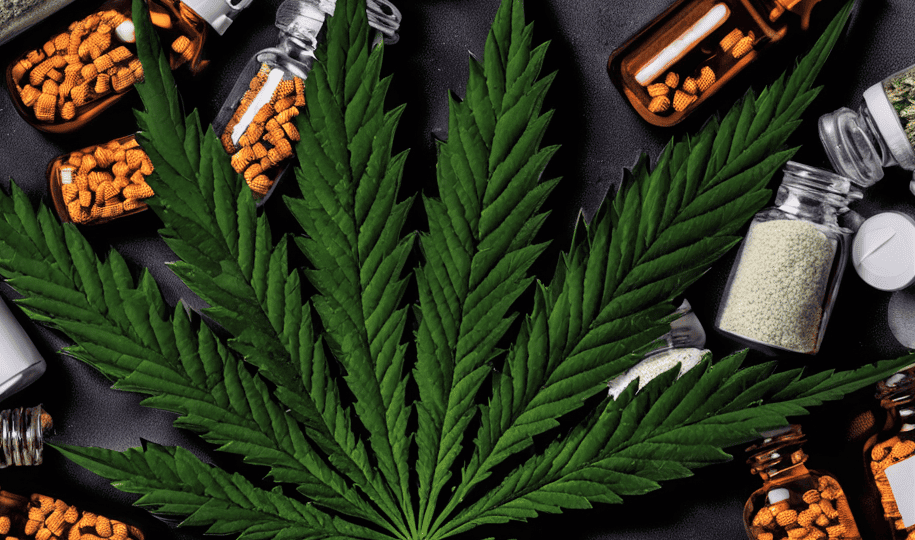The opioid crisis has reached alarming proportions, claiming thousands of lives and devastating communities worldwide. In this article, we will explore the compelling evidence and statistics supporting the use of medical marijuana as a crucial tool in mitigating the opioid crisis. While more research is needed, the data presented here underscores the potential of cannabis to offer an alternative and safer approach to pain management.
The Opioid Crisis in Numbers
Before delving into the role of medical marijuana, it’s essential to understand the gravity of the opioid crisis through statistics:
- Opioid Overdose Deaths: In the United States alone, there were over 93,000 drug overdose deaths in 2020, with opioids accounting for approximately 69,000 of these fatalities, according to the Centers for Disease Control and Prevention (CDC).
- Prescription Opioid Use: The National Institute on Drug Abuse (NIDA) reports that in 2019, about 9.7 million people in the U.S. misused prescription pain relievers.
- Rising Overdose Rates: Between June 2019 and May 2020, the United States witnessed a 36% increase in opioid overdose deaths, indicating the growing severity of the crisis, as reported by the CDC.
- Economic Costs: The economic burden of the opioid crisis in the United States surpassed $1 trillion between 2001 and 2017, taking into account healthcare costs, lost productivity, and criminal justice expenses, as estimated by Altarum, a nonprofit research organization.
The Role of Medical Marijuana
Now, let’s explore how medical marijuana can play a significant role in addressing these statistics and mitigating the opioid crisis:
- Pain Management Efficacy: Multiple studies have shown that medical marijuana can effectively manage chronic pain. A study published in JAMA Internal Medicine in 2018 found a 64% decrease in opioid use among chronic pain patients who used medical cannabis. This demonstrates the potential for cannabis to serve as an alternative for pain management.
- Reducing Opioid Prescriptions: In states with medical marijuana programs, there has been a consistent decline in opioid prescriptions. According to a 2018 JAMA study, states with legalized medical marijuana experienced a 14.4% decrease in opioid prescriptions for Medicare beneficiaries.
- Opioid Overdose Reduction: A study published in JAMA in 2014 revealed that states with medical marijuana laws experienced a 25% reduction in opioid overdose deaths compared to states without such laws. This suggests that medical marijuana may help prevent opioid-related fatalities.
- Opioid Withdrawal Management: Medical marijuana, particularly strains rich in cannabidiol (CBD), has shown promise in alleviating opioid withdrawal symptoms. A 2019 study published in the American Journal of Psychiatry demonstrated that CBD reduced cue-induced cravings in individuals with opioid use disorder.
- Safer Pain Management Option: Unlike opioids, marijuana carries a lower risk of addiction and overdose. The National Institute on Drug Abuse reports that the risk of fatal overdose from marijuana is extremely low. This offers a safer alternative for individuals in need of pain relief.
- Improved Access to Treatment: Medical marijuana’s acceptance and availability can encourage individuals struggling with opioid addiction to seek help and treatment without fear of stigma or criminal repercussions. It fosters a more compassionate approach to addiction care.
Conclusion
The opioid crisis is an urgent public health challenge that requires innovative solutions. While further research is needed to establish the full extent of medical marijuana’s role, the statistics and evidence presented here indicate its potential to alleviate the crisis. By reducing opioid prescriptions, preventing overdoses, and offering a safer approach to pain management, medical marijuana emerges as a valuable tool in our fight against the opioid epidemic.
As policymakers, healthcare professionals, and researchers continue to explore and refine the use of medical cannabis, it is imperative to prioritize evidence-based practices, patient safety, and responsible regulation. Harnessing the potential of medical marijuana in conjunction with other comprehensive strategies can pave the way for a brighter, healthier future and a significant reduction in opioid-related suffering and deaths.




